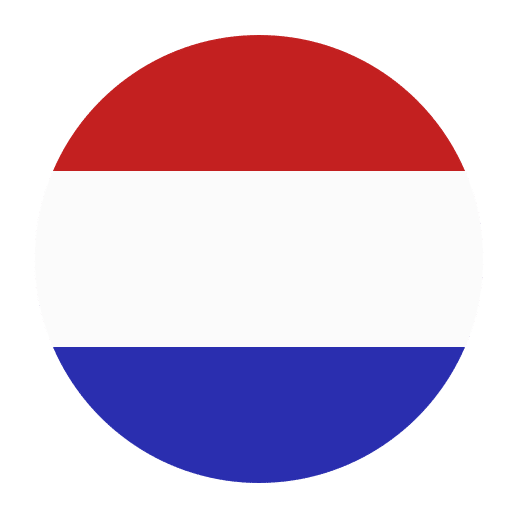Learning a new language can be an exciting and rewarding journey, but it can also be challenging if you don’t find the right method that works for you. One innovative and engaging way to learn Dutch is through DIY projects and crafts. This approach not only allows you to practice the language in a hands-on manner but also makes the learning process more enjoyable and memorable. In this article, we will explore how you can incorporate Dutch language learning into your crafting activities, providing practical tips, useful vocabulary, and project ideas to help you get started.
Why Learn Dutch Through DIY Projects and Crafts?
There are several reasons why combining language learning with DIY projects and crafts can be highly effective:
1. Contextual Learning: When you use language in a specific context, such as making a craft, it becomes easier to remember vocabulary and phrases. The context provides meaning and relevance to the words you are learning.
2. Multisensory Engagement: DIY projects involve seeing, touching, and sometimes even smelling or hearing, which engages multiple senses. This multisensory engagement helps reinforce memory and understanding.
3. Creativity and Fun: Crafting is inherently creative and enjoyable. When you associate language learning with fun activities, you are more likely to stay motivated and enthusiastic.
4. Practical Application: Through DIY projects, you can practice using Dutch in real-life situations, which is essential for developing practical language skills.
Getting Started: Basic Dutch Vocabulary for Crafting
Before diving into specific projects, it’s helpful to familiarize yourself with some basic Dutch vocabulary related to crafting. Here are some common words and phrases:
Materials and Tools:
– Schaar (scissors)
– Lijm (glue)
– Papier (paper)
– Karton (cardboard)
– Verf (paint)
– Pinsel (brush)
– Naald (needle)
– Draad (thread)
– Stof (fabric)
– Potlood (pencil)
Actions:
– Knippen (to cut)
– Plakken (to glue)
– Verven (to paint)
– Naaien (to sew)
– Tekenen (to draw)
– Vouwen (to fold)
– Maatnemen (to measure)
– Schilderen (to paint)
– Versieren (to decorate)
Colors:
– Rood (red)
– Blauw (blue)
– Geel (yellow)
– Groen (green)
– Zwart (black)
– Wit (white)
– Oranje (orange)
– Paars (purple)
– Roze (pink)
– Bruin (brown)
With these basic words in your toolkit, you can start understanding instructions and communicating your crafting needs more effectively.
DIY Project Ideas to Practice Dutch
Now, let’s delve into some specific DIY projects that you can use to practice your Dutch. These projects are designed to be simple yet effective in helping you learn and use new vocabulary and phrases.
1. Dutch Vocabulary Flashcards
Creating flashcards is a great way to learn new words, and you can make it a DIY project.
Materials Needed:
– Cardstock or thick paper
– Markers or pens
– Scissors
Instructions:
1. Cut the cardstock into small, uniform rectangles.
2. On one side of each card, write a word in English.
3. On the other side, write the corresponding Dutch word.
4. Decorate the cards with drawings or stickers to make them visually appealing.
As you create the flashcards, you’ll be reinforcing the vocabulary. Once they are complete, use them to test yourself or practice with a friend.
2. Dutch Recipe Book
Cooking and baking can be a delightful way to learn a new language. Create a DIY Dutch recipe book by translating your favorite recipes into Dutch.
Materials Needed:
– A blank notebook or binder
– Recipe cards or paper
– Pens or markers
Instructions:
1. Choose a few of your favorite recipes.
2. Translate the ingredient lists and instructions into Dutch.
3. Write or type the translated recipes onto the recipe cards or paper.
4. Compile the recipes into your notebook or binder, organizing them by category (e.g., appetizers, main courses, desserts).
This project not only helps you learn food-related vocabulary but also provides you with a useful resource for future cooking adventures.
3. Personalized Dutch Calendar
Creating a personalized calendar can help you learn the days of the week, months, and useful phrases related to time.
Materials Needed:
– A blank calendar template or plain paper
– Markers, stickers, or other decorative items
Instructions:
1. If using plain paper, create a grid for each month, including spaces for each day.
2. Write the names of the months (januari, februari, maart, etc.) at the top of each page.
3. Label the days of the week (maandag, dinsdag, woensdag, etc.) on the grid.
4. Add important dates and events in Dutch (e.g., verjaardag for birthday).
5. Decorate each month with drawings, stickers, or other embellishments.
By referring to your personalized calendar regularly, you’ll become more familiar with time-related vocabulary and phrases.
4. Dutch Themed Scrapbook
Scrapbooking is a creative way to document your experiences and practice language skills. Create a Dutch-themed scrapbook to capture your language learning journey.
Materials Needed:
– A blank scrapbook or album
– Photos, tickets, postcards, and other memorabilia
– Glue, scissors, pens, and markers
Instructions:
1. Choose a theme for your scrapbook, such as “My Dutch Learning Journey” or “Dutch Culture and Traditions.”
2. Gather photos, tickets, postcards, and other memorabilia related to your theme.
3. Write captions and descriptions in Dutch for each item you include in your scrapbook.
4. Decorate the pages with drawings, stickers, and other embellishments.
This project allows you to practice writing in Dutch while creating a meaningful keepsake of your language learning experience.
Tips for Successful Language Learning Through DIY Projects
To make the most of your DIY projects and enhance your Dutch language learning, consider the following tips:
1. Set Clear Goals: Determine what you want to achieve with each project. Whether it’s learning specific vocabulary or practicing certain phrases, having clear goals will keep you focused.
2. Use Authentic Resources: Whenever possible, use authentic Dutch resources such as books, websites, and videos. This will expose you to real-life language use and cultural nuances.
3. Practice Regularly: Consistency is key in language learning. Set aside regular time for your DIY projects and language practice to maintain steady progress.
4. Engage with Native Speakers: If you have the opportunity, interact with native Dutch speakers. They can provide valuable feedback, correct your mistakes, and help you improve your pronunciation and fluency.
5. Be Patient and Persistent: Learning a language takes time and effort. Be patient with yourself and keep pushing forward, even when you encounter challenges.
Conclusion
Learning Dutch through DIY projects and crafts is a fun and effective way to immerse yourself in the language. By incorporating hands-on activities into your language learning routine, you can make the process more enjoyable, memorable, and practical. Whether you are creating flashcards, translating recipes, designing a personalized calendar, or scrapbooking your journey, these projects provide meaningful opportunities to practice and reinforce your Dutch skills. So gather your materials, set your goals, and embark on a creative and enriching language learning adventure. Veel succes! (Good luck!)

